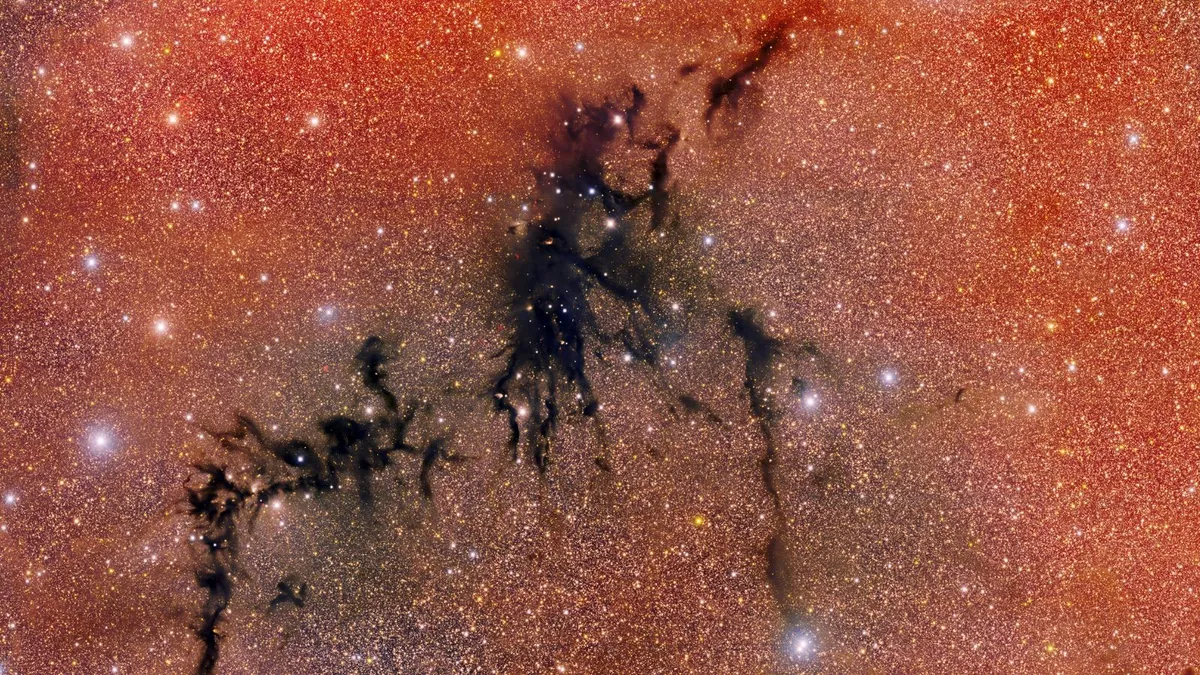
A team of astronomers has made an exciting discovery of a dense stellar nursery teeming with infant stars within a vast cosmic ink blot known as the Circinus West molecular cloud. Utilizing one of the world's most advanced digital cameras, the Dark Energy Camera (DECam), mounted on the Víctor M. Blanco 4-meter telescope at the Cerro Tololo Inter-American Observatory in Chile, the team was able to capture detailed images of this intriguing region.
The Circinus West molecular cloud, a cold and dense accumulation of gas and dust, spans an impressive 180 light-years—approximately 60 times the size of our solar system. These types of nebulas are so thick that they obstruct light, resulting in their characteristic dark, ink-like appearance and earning them the name dark nebulas. With a mass roughly 250,000 times that of our Sun, the Circinus West molecular cloud is rich in the raw materials necessary for star formation.
Located about 2,500 light-years from Earth in the constellation Circinus, this molecular cloud holds a treasure trove of stellar activity. Although it is classified as a dark nebula, the Circinus West cloud is not entirely devoid of light. The team was able to zoom in on this area using the powerful DECam instrument, revealing a population of young stars and their associated phenomena.
One of the key indicators of newborn stars is the presence of occasional pockets of light that punctuate the inky tendrils of the molecular cloud. These luminous spots are produced during the star formation process when protostars—stars that have not yet accumulated sufficient material to initiate hydrogen fusion in their cores—emit powerful jets of material into space. These jets carve out cavities in the dense gas and dust, making the high-energy outflows easier to detect than the protostars themselves, which remain enveloped in their natal gas and dust.
In the central region of the Circinus West molecular cloud, known as the Cir-MMS region, multiple outflows can be observed. At the heart of this area lies a large cavity created by radiation emitted from an infant star. Another stellar newborn is actively forming a similar cavity in the lower left section of the Cir-MMS region, demonstrating the dynamic processes occurring within this stellar nursery.
The abundance of Herbig-Haro (HH) objects in the Circinus West cloud further supports the notion of ongoing star formation. These glowing red patches of gas and dust are commonly found near newborn stars and are formed when fast-moving gas expelled by stars collides with the slower-moving surrounding gas. The presence of numerous HH objects within Circinus West highlights the active stellar processes taking place in this region.
Interestingly, the Circinus West molecular cloud is not solely inhabited by newborn stars. It also features many stars at the end stages of their life cycle. The planetary nebulas observed by the DECam in this region appear as red blotches and represent the remnants of red giant stars. These stars have exhausted their hydrogen fuel and main-sequence lifetimes, leading them to shed their outer layers. The expelled material cools and disperses, forming what we refer to as a planetary nebula, despite the confusing name that suggests a connection to planets.
In conclusion, the discovery of the Circinus West molecular cloud as a dense stellar nursery not only enhances our understanding of star formation but also showcases the intricate lifecycle of stars. Through advanced imaging technology like the DECam, astronomers can continue to unravel the mysteries of our universe.